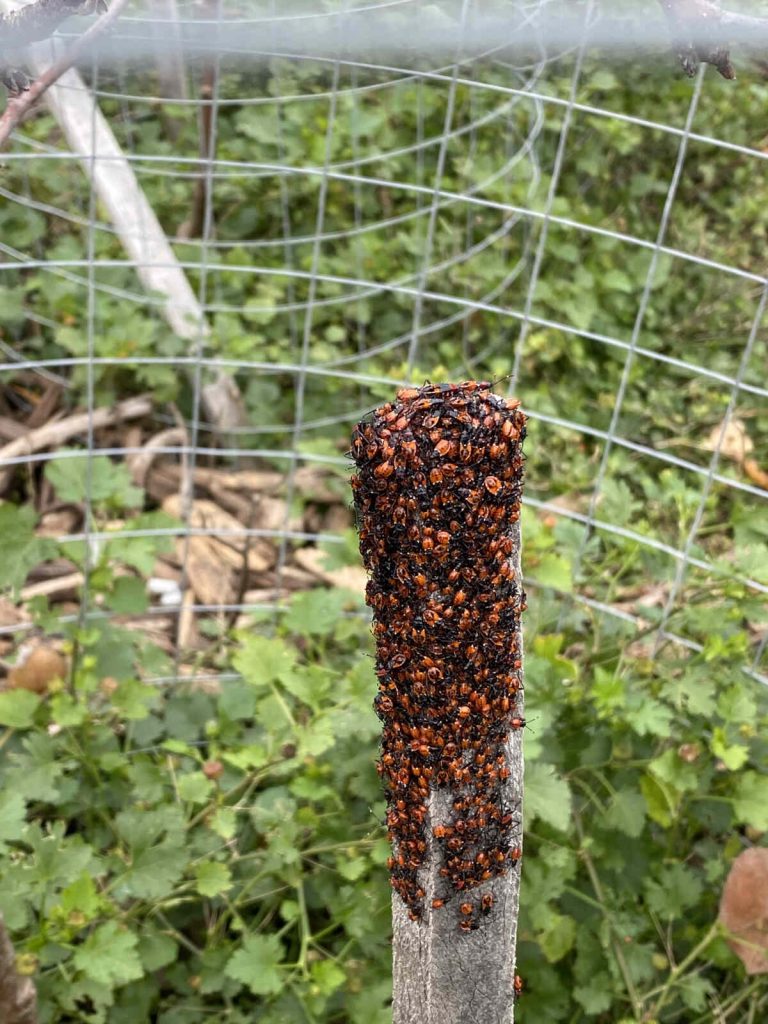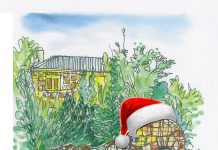
These sap sucking insects are black and red or black and orange and while a few don’t hurt, they can cause damage when they are in great numbers. They can cause new growth to wilt and die when they suck a plant’s sap. They can also suck the sap of fruit such as tomatoes and cause the fruit to discolour, become blotchy, and go hard and unpleasant. When they have been bad, some of my tomatoes end up looking semi-sundried!? The adults are often seen in pairs joined end to end. They often appear in swarms on a wide range of plants as the weather starts to warm up.

Their natural defence mechanism is to drop to the ground when disturbed, so use this to your advantage by having a bucket of soapy water under the branch and then lightly tapping the branch. The offending bugs will drop off whilst other beneficial insects hold on tighter and do not get affected. The aim is not to eliminate them completely but rather reduce their numbers significantly. If you see a swarm of them you could also try to dust them with Diatomaceous Earth, which is an abrasive insecticide and will cause their death, however it will also affect any other bugs you dust with it, so take care to only treat the pests.

Years ago, I discovered they overwintered on marshmallow, so I have been slowly waging war on this weed around two-acre garden (not yet dealt with everything in the paddock though!?). last autumn I discovered that they also harbour on a groundcover I had let grow in my orchard, thinking it was harmless. I know this plant is a weed called Modiola caroliniana in the mallow family, commonly called red-flowered mallow. So long term, wage war on the weeds they harbour on and the pest problem will be reduced.








